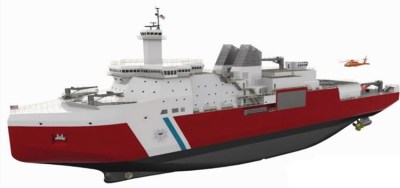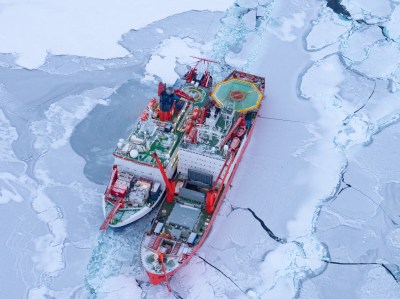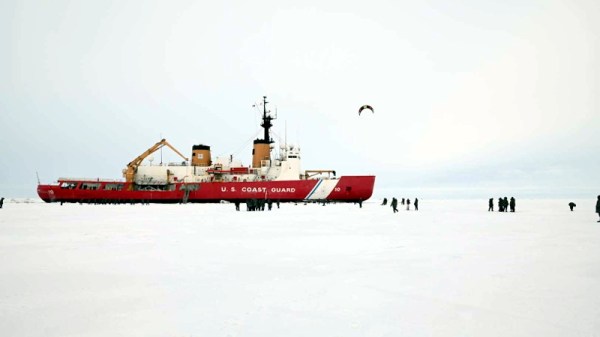Did artificial intelligence just jump the shark? Maybe so, and it came from the legal world of all places, with this report of an AI-generated victim impact statement. In an apparent first, the family of an Arizona man killed in a road rage incident in 2021 used AI to bring the victim back to life to testify during the sentencing phase of his killer’s trial. The video was created by the sister and brother-in-law of the 37-year-old victim using old photos and videos, and was quite well done, despite the normal uncanny valley stuff around lip-syncing that seems to be the fatal flaw for every deep-fake video we’ve seen so far. The victim’s beard is also strangely immobile, which we found off-putting.
arctic5 Articles
IGY: The Year We All Got Along
If you are a Steely Dan fan, you might know the Donald Fagen song, “IGY.” In it, Fagen sings about a rosy future with high-speed undersea rail, solar power, giant computers making life better, and spandex jackets. Since that song was on the 1982 album Nightfly, it is already too old for some people to remember, but the title goes back even further: the International Geophysical Year which was actually a little longer than a year in 1957 and 1958. The year was a concerted effort by 67 countries to further mankind’s knowledge of the Earth. It was successful, and was big news in its day, although not much remembered now.
The real origin dates back to even earlier. In 1882 and 1932 there were International Polar Years dedicated to researching the polar regions of the Earth. In a way, it makes sense to do this. Why should 60 or more countries each mount difficult, dangerous, and expensive expeditions to such a hostile environment? However, instead of a third polar year, James Van Allen (who has a famous belt) and some other scientists felt that advances in many fields made it the right time to study geophysics. From the scientific point of view, the IGY coincided with the solar activity cycle maximum. But there were other forces at play, too.
Rare Diode Threatens Coast Guard’s Arctic Ambitions
The United States Coast Guard heavy icebreaker Polar Star is literally a one-of-a-kind ship. After its sister Polar Sea was deactivated in 2010 it became the most powerful icebreaker in the fleet, and one of only two US icebreakers capable of operating in the treacherous polar regions. The vessel is critical to protecting America’s scientific and economic interests in the Arctic, but according to a recent article in Business Insider, the ship’s age and scarcity of spare parts is making an already difficult mission even harder.
In the article, Captain William Woityra specifically mentions that the ship’s diesel-electric propulsion system is running on borrowed time as the diodes used in its AC/DC rectifier are no longer manufactured. With none remaining in the Coast Guard’s inventory, the crew has had to turn to eBay to source as many spares as possible. But once their hoard runs out, Captain Woityra fears his ship will be dead in the water:
We’ve got a few dozen of these in a box on a shelf, when they’re gone, the ship will not be able to run anymore. It’s really kind of disconcerting … that this ship, and this operation, and the US’s icebreaking presence in the Arctic is reliant on a box of spare parts that … there are no more of.”
The 45 year old ship received a $60 million refit in 2013, but that was only expected to extend the hard-working vessel’s life by 8 to 10 years. There was a proposal for a far more thorough overhaul, one which potentially would have keep the Polar Star in service until nearly 2040; but with an estimated cost of $400 million, Congress decided to go with the more economical stop-gap refit.

This story comes just days after the Air Force announced it’s looking for a few good hackers to help reverse engineer components on its aging fleet of B-2 bombers. Much like the Polar Star’s vintage rectifier diodes, spare parts for the the stealthy aircraft are getting increasingly difficult to find.
While the Air Force has enough money in the budget to get replacements made, the Coast Guard will just have to hope their stock of diodes holds out a little while longer. Congress has already approved the Polar Security Cutter Program, a fleet of next-generation icebreakers designed to be comparable to newer Russian and Chinese vessels. The first of these ships could set sail by 2024, providing the Polar Star some much-needed backup.
[Thanks to Chuckz for the tip.]
MOSAiC Project Freezes A Boat In The Arctic Ice Pack For Science
Just over a fortnight ago, RV Polarstern, a German research vessel, sailed back into port, heralding the end of the largest Arctic research project ever undertaken. The MOSAiC expedition, short for Multidisciplinary drifting Observatory for the Study of Arctic Climate, spent a full year running experiments to measure conditions at the North Pole, and research how the unique Arctic climate is being affected by human activity.
Unprecedented In Size And Scope

With a budget exceeding €140 million, and with over 300 scientists attached to the project, the expedition aimed to study a full year-long ice cycle in the Arctic region. To achieve this, the research vessel of the project, RV Polarstern, was navigated into an ice floe, and allowed to freeze in and drift with the ice pack. As the seasons progressed, the vessel drifted with the sea ice across the polar region. Along the way, a series of rotating research teams set up equipment on the ice and took regular measurements, investigating several scientific focus areas. Different groups observed atmospheric conditions and the sea ice itself, with researchers also focusing on biogeochemistry, the ocean, and the ecosystems in the area.
Icebreakers were used to transport goods and personnel to the RV Polarstern over the duration of the mission. The project faced issues in spring, as a pre-planned changeover executed by aircraft had to be abandoned due to restrictions brought about by the COVID-19 pandemic. Instead, this was also executed by ship, with the Polarstern temporarily leaving the ice to rendezvous with RV Sonne and RV Maria S. Merian for the changeover of approximately 100 crew and to pick up provisions. The detour took three weeks, but didn’t have any major negative impacts on the mission. Continue reading “MOSAiC Project Freezes A Boat In The Arctic Ice Pack For Science”
Ask Hackaday: Why Did GitHub Ship All Our Software Off To The Arctic?
If you’ve logged onto GitHub recently and you’re an active user, you might have noticed a new badge on your profile: “Arctic Code Vault Contributor”. Sounds pretty awesome right? But whose code got archived in this vault, how is it being stored, and what’s the point?
Continue reading “Ask Hackaday: Why Did GitHub Ship All Our Software Off To The Arctic?”
















